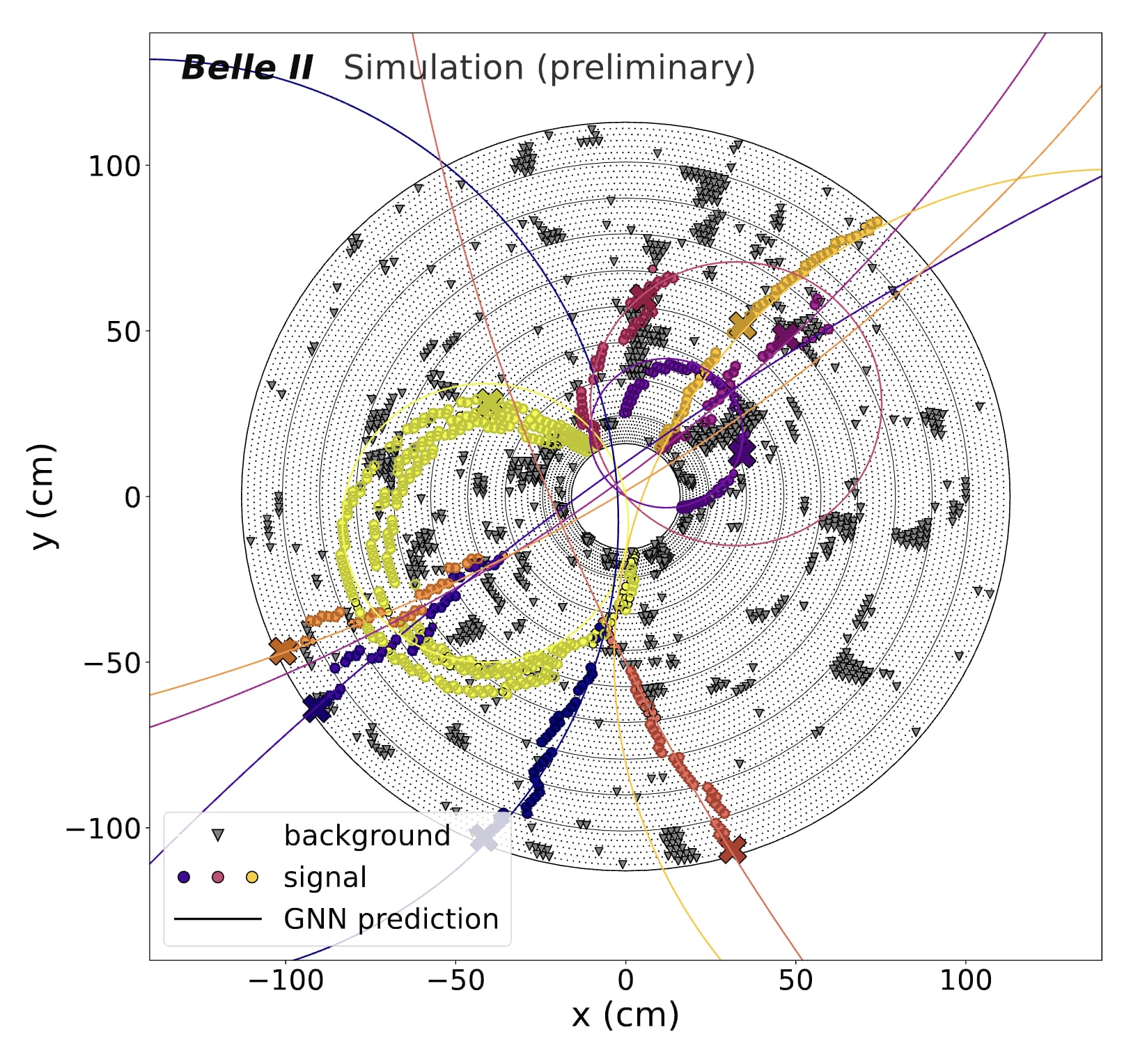In a new paper that appeared on a preprint server today, researchers at the Institute of Experimental Particle Physics (ETP) at KIT show a new solution to this problem: the CAT Finder (CDC AI Track) algorithm. This new track-finding algorithm, based on Graph Neural Networks (GNNs), is designed to work with the gas-filled Belle II central drift chamber (CDC). The CAT Finder simultaneously detects an unknown number of tracks, associates detector hits to each track, and infers the particles' momenta and points of origin. These initial results are then used as inputs for a conventional track fitting algorithm.
The algorithm was tested using realistic simulation data from the Belle II experiment in Japan, including background noise taken from actual collision data. The results showed that the CAT Finder significantly outperforms the existing track reconstruction methods. For instance, in events involving a hypothetical long-lived particle decaying into two charged particles, the new algorithm achieved a track reconstruction efficiency of 85.4%, compared to 52.2% with the current baseline reconstruction. Additionally, it demonstrated a lower rate of fake tracks (2.5% versus 4.1%), making it a more reliable tool for data analysis. "Fake tracks" refer to incorrect track reconstructions that do not correspond to actual particles produced in the collision. These fake tracks can arise due to several factors, including noise in the detector, mis-association of detector hits, or errors in the reconstruction algorithms.
The CAT Finder is the first end-to-end machine learning track reconstruction algorithm to be applied in a realistic particle physics environment like Belle II, and its success suggests that GNNs could play a key role in future experiments at Belle II and similar facilities. The team is currently adjusting the CAT reconstruction code ready for the nominal Belle II reconstruction software to be used in future data processing. They are also working towards making such large GNNs usable on dedicated hardware to be used for real-time triggering of the Belle II detector.
The research was carried out at the Institute of Experimental Particle Physics at KIT. PhD Student Lea Reuter played a leading role in the development: “As part of my PhD thesis, I will now study how the CAT Finder can improve the discovery reach for certain Dark Matter models. By applying the new reconstruction, I aim to improve existing searches for long-lived dark Higgs bosons. The better track reconstruction efficiency effectively means we can extract more meaningful information from the same data.”
The results are available as preprint on arxiv:
https://arxiv.org/abs/2411.13596
The code to reproduce the result is available on github:
https://github.com/leareuter/catfinder
Contact: Prof. Torben Ferber
E-Mail: torben.ferber@kit.edu


